The creations of Canadian-born Japanese designer and interior architect Oki Sato and his design studio, Nendo, are characterised by simplicity, lightness and elegance, while always embracing functionality and a sense of humour.


Oki Sato is really a child at heart. Designing, to him, is all about having fun. Take, for example, the Gacha Gachaminiature capsule toy figurines he has just designed for Kaiyodo – the type dispensed from vending machines after inserting coins into a slot and turning the knob – or the single-flower vases perched on metal bars for Zens, which call to mind birds on a wire.
Gacha Gacha
Inspired by the look and appeal of conventional toy vending machines, Oki Sato’s team at Nendo developed their own version of the device, which dispenses ideas instead.
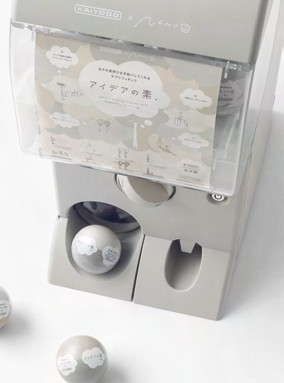
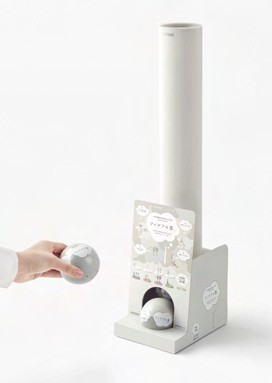
INAC Hourglasses
Each of the four hourglasses is made from polished acrylic and directs the flow of coloured sand in different ways, in order to show how time can be presented in an interesting visual manner.
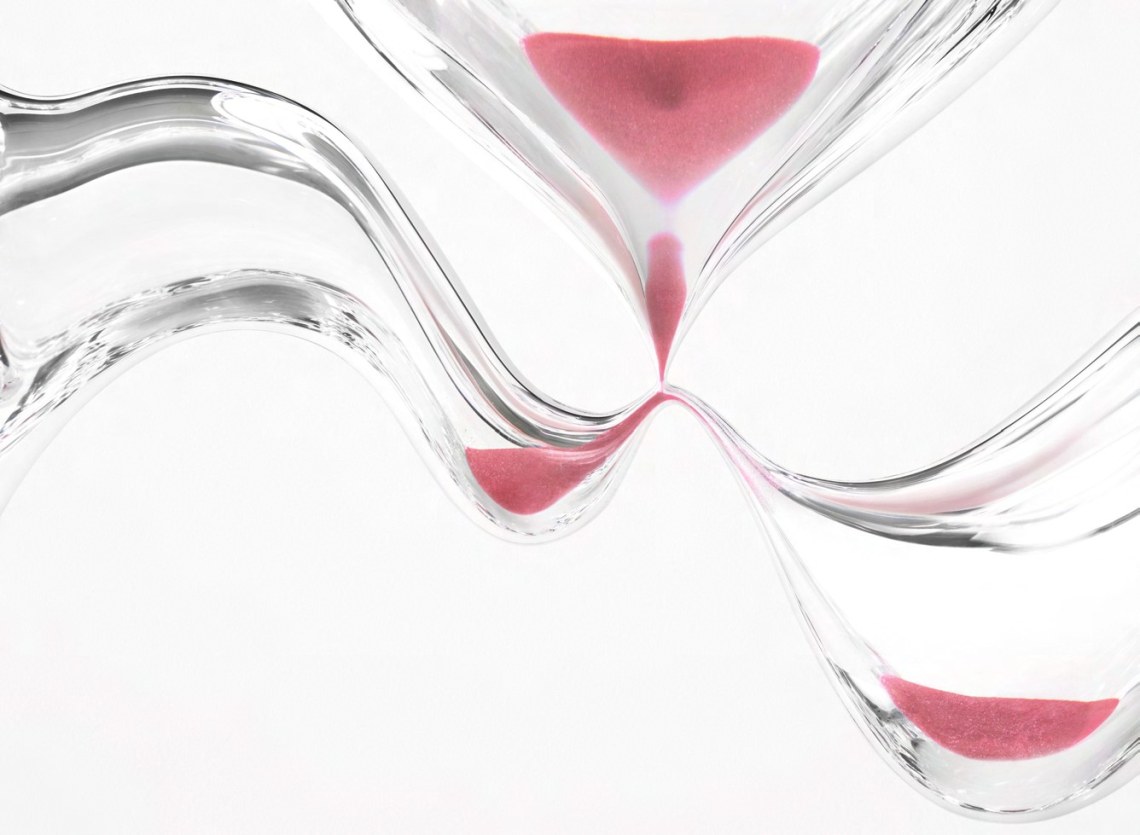
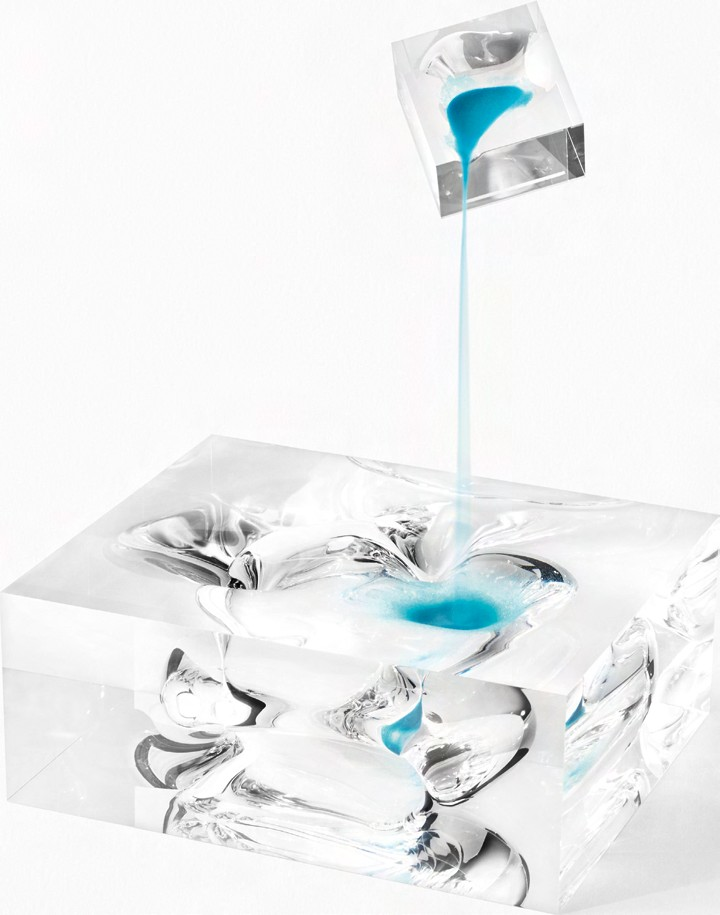
Kartell Eigroub Lamp
A tribute piece to commemorate the 10th anniversary of the brand’s Bourgie table lamp, it is the result of Nendo inverting and rotating the lamp’s silhouette, rather than touching the original design.
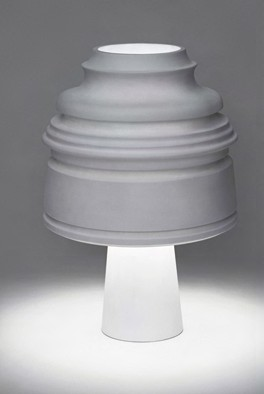
Zens Fungi Series
Inspired by the sporadic growth of mushrooms, platforms of varied sizes, stacked on the rims to form unusual display combinations, seem to be sprouting from one another.
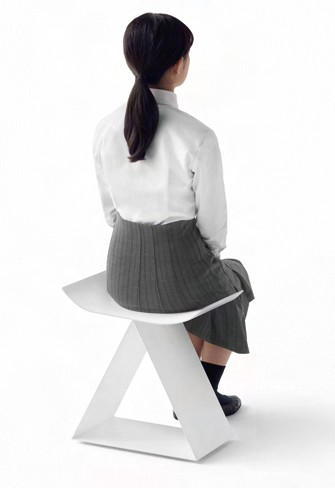
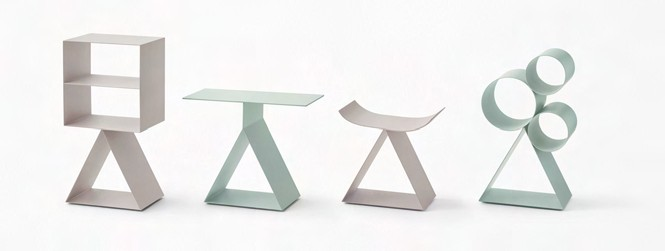
Glas Italia Soft Tables
The frosted glass low tables in the shape of boxes feature joints printed in bright colours with a gradation effect, as well as edges that give a soft, blurry appearance – contrary to the usual image of glass.

“I make awful sketches, but, when you’re very good at sketching, you feel that the design and idea are good as well. If it’s a very bad sketch, but you’re excited, that means your idea is good, so you feel very confident. It’s like a lighthouse for us, leading us back in the direction that we want to go.” Zens Fungi Series Inspired by the sporadic growth of mushrooms, platforms of varied sizes, stacked on the rims to form unusual display combinations, seem to be sprouting from one another.
Prolific and versatile is Oki, whose wide-ranging client list includes Baccarat, Bisazza, Boffi , Bombay Sapphire, Casamania, Driade, Foscarini, Fritz Hansen, Glas Italia, Kartell, Lasvit, Moleskine, Moroso, Puma, Ruinart, Serralunga, Shiseido, Starbucks and Tod’s. He has worked on everything from an installation for Hermes’ flagship store in Tokyo, punched metal chairs mimicking the spaces in which they were placed at London’s Victoria and Albert Museum, a stool for Cappellini with its construction looping like ribbons of ballet slippers, and gold jewellery that seemed to have been drawn by hand in a single stroke, to a portable lamp for Louis Vuitton’s firstever furniture collection, 24 Issey Miyake boutique interiors, a human-sized birdhouse containing 78 nest spaces located in a forest, and tableware made from recycled Coca-Cola glass bottles.
Born in Toronto in 1977, Oki graduated with a master’s in architecture from Waseda University in Tokyo in 2002. He immediately set about founding his multidisciplinary design practice, Nendo, in the city after visiting the Milan Furniture Fair for the first time. He based the name on the Japanese word for “modelling clay”, as he wanted to create something adaptable and free.
By 2005, he had opened an outpost in Milan, and one in Singapore seven years later. “I was born in Toronto because of my father’s job,” he recounts. “He worked for a Japanese electric company there. I was always reading Japanese cartoons as a child, but never thought I would be a designer or architect, until going to university. I chose to study architecture because I have a good imagination, not because I wanted to be an architect. In fact, I felt it was kind of boring studying architecture.”
Like so many young designers before him, Oki cites his meetings with Maddalena De Padova and Giulio Cappellini as defining moments in his career, as he developed products with them early on, and got the opportunity to work with European clients.
Although he calls them his “Italian mother and father”, as they coached him to become a designer, though he did not have any formal design training, he divulges that his encounter with Issey Miyake marked a turning point. The fashion designer asked him to create a chair with the pleated paper discarded from producing the Pleats Please collection, resulting in the Cabbage chair.
He recalls: “I felt that it was not completed, that it had to have more function, to be more stable, to be more comfortable, but Mr Miyake said, ‘You have to stop. When you feel that it looks nice and feels nice, it’s okay to stop doing the project.’
Emeco Su Stool
This stool references Emeco’s aluminium 1006 Navy chair and comes in eco-conscious materials: recycled polyethylene, eco-concrete or reclaimed oak.
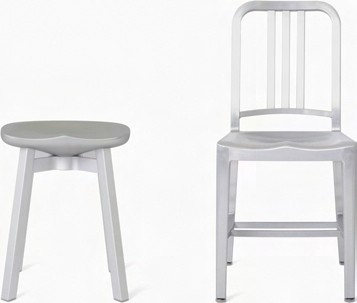
“That was the moment I felt so much freedom. You have to see the goal, then you have to go accordingly, but, when you go in a different direction, there’s another goal in that direction. Suddenly, I was relaxed and enjoying design even more than before.”
Today, the boundarycrossing designer leads a 70-strong team working in product, graphic, interior and exhibition design, and architecture. Although tackling a mind-boggling 400 projects in parallel, Oki delivers products of consistently high quality. He’s interested in keeping his ideas as raw, fresh and pure as possible and to be honest and true to the materials, while insisting on meeting all his clients, seeing every single prototype and discussing each detail.
Fritz Hansen N01 Chair
Hand-assembled using 23 pieces of wood and veneer from a Belgian family-owned wood manufacturer founded in 1924, this chair was designed to highlight the timeless nature of quality wood craftsmanship. (Available from W.Atelier)

Rokumaru Coat Rack
Reinterpreting nature, Nendo designed a coat rack with six branches that are the radii of an imaginary circle, and it’s named after the union of the Japanese words roku (six) and maru (circle).

Axor Lampshower
Starting from the idea that the bathroom could open on to the living room, the creation is neither a lamp nor a shower, but a hybrid, where water jets emerge from the rim of the lampshade.

text Y-JEAN MUN-DELSALLE























